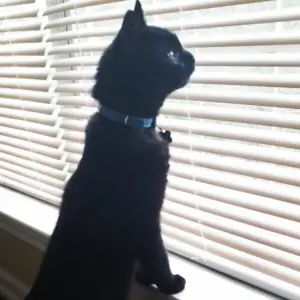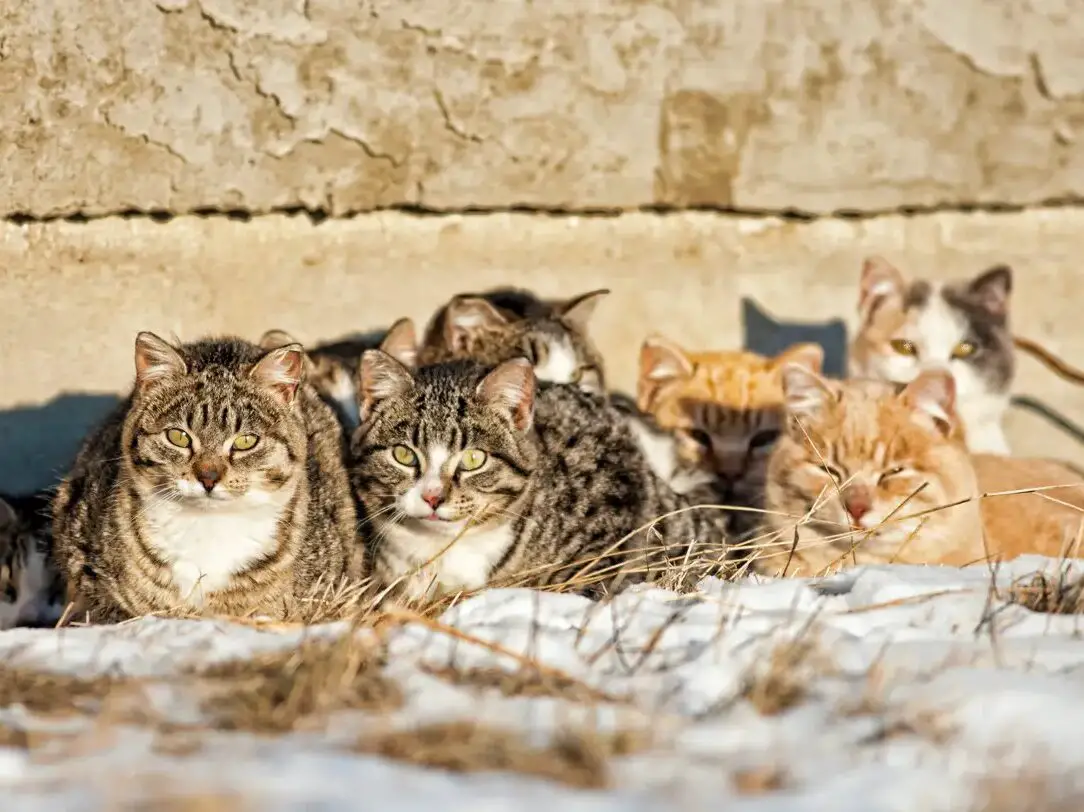Guest blog by Shadow the PR Cat
My favorite day in the whole world is December 13, 2016. Why? Because it was the day I was adopted. What makes this an even more special day is that I was adopted despite being a semi-feral cat. The volunteers were very worried I would not adjust and could not be socialized, but the PR team that took me in was able to tame me in just 3 short weeks.
This is not the typical story of semi-feral and feral cats who are adopted, but it could be your story too, if you follow my advice on how to tame your semi-feral housemate.
What is a Semi-Feral Cat?
Commonly referred to as a social cat by some animal rescue experts, a semi-feral is a cat or kitten who has had some experience with humans in the past. Unlike feral cats, semi-feral cats are vocal and may make eye-contact with you, even if they don’t allow you to touch them.
Social cats are not to be confused with socialized cats who are fully domesticated, and accustomed to being around, and being touched by humans. Unfortunately, it is very difficult to tame semi-feral and feral cats after 4 – 6 months of age, but it is not impossible.
Ignore the Cat
When trying to socialize a semi-feral cat who quite obviously enjoys hiding from you, this might seem counterintuitive. How will a cat or kitten ever become comfortable around humans, if you don’t interact with them?
Becky Robinson, president and founder of Alley Cat Allies, shares a little secret about felines. “Cats are animals that seek pleasure and attention,” she says. “If they are used to people, then they want that attention.”
By ignoring a cat, you are forcing them to make the first move. This can be tricky, but if they are the ones who reach out to you, and the interaction is positive, then they will keep coming back for more.
As licensed veterinary technician and volunteer, Mike Phillips, says in his video Tough Love: Socializing Feral Kittens, “Cats domesticate themselves. We don’t domesticate them. They choose out of self-interest”.
Provide Enrichment
As I mentioned before, if a cat interacts with you and judges the experience to be positive, they will keep coming back. But how do you ensure the cat views time with you as good, and not threatening or boring?
Tammy Browne, Director at Montego Bay Animal Haven, a no-kill shelter animal shelter in Jamaica, says,
“You can try to play with toys and use treats to encourage the cat to be friendlier.”
Mike Philips agrees, and adds that the best time to work with kittens is at mealtime.
Robinson, however, reminds new cat owners that what enriches our lives, may not do the same for your semi-feral friend. “A lot of cats and kittens are very scared of music. I would say 99% of music is not a good thing. It’s the vibrations,” she warns. “If you put a boombox on top of something, it vibrates the floor or desk.”
Use Slow Desensitization
Not all sounds are a bad idea, though. For instance, when I arrived at Alexis Chateau PR, one of the first things they noticed was that I was terrified of human voices. Alex, the managing director and my primary caretaker, rectified this by reading aloud in the office, so I would get used to her voice.
When she left the office, she would turn a small radio on, and put it on the AM channels, so I could listen to talk shows. Becky Robinson agrees that this is a great way to handle cats who are easily spooked by human voices.
“You have to desensitize them, and do it slowly,” she recommends. “Watch them and be in-tune with them.”
Respect their Space
Kittens are cute and cuddly, but they can get into a lot of trouble. For this reason, you will need to resist the urge to give kitty free run of the house, no matter how cute they are. “Carefully confine them to a small room, like a bathroom, and clear the room of anything harmful,” Becky Robinson advises.
It’s also important to ensure your cat has room to hide, and flee, if it comes down to it. I cannot stress this enough: never ever corner a semi-feral. Becky Robinson explains why. “What kicks in is the natural fight or flight response,” she says. “If they are not given an option to flee, then they have to fight. They are very scared and they have to defend themselves.”
This is how volunteers and children alike end up with scratches and bites. If you absolutely must get a hold of the cat, you will need to coax him out.
Reach for the Good Stuff!
There are about 100 different types of catnip, and not all cats are susceptible. But if your little guy likes it, you’re in luck. Catnip can help to calm and embolden a shy, fearful, or anxious cat.
If catnip does nothing for your cat, then fret not, there are other substances you can try. Alley Cat Allies, an advocacy group for the protection of felines, advises, “Consider using non-pharmaceutical behavior modifiers like Feliway, Rescue Remedy, or Composure Soft Chews. These products can help calm and comfort cats using essential oils or extracts or by mimicking natural feline pheromones.”
Once the cat becomes used to you, chances are they may not need these substances anymore. However, my primary caretaker still leaves behind a lot of catnip in my favorite spaces for the opposite reason now. I resent her prolonged absence, and catnip is always a great distraction!
Most times, semi-feral cats can be domesticated and live happy and healthy lives with their humans. This may take a few weeks, but more often it will take months, and even up to a year. Becky Robinson also estimates that an unfortunate 14% of cats simply cannot be tamed.
Because of this, when you embark on your adventure with your semi-feral cat, remember to be patient and to respect their space. Understand that socializing a semi-feral is a process, and it won’t happen overnight. But with patience, respect, and lots of treats, your semi-feral can grow to love you, too!

Shadow the PR Cat is the Goodwill Ambassador at Alexis Chateau PR. His job includes tweeting, purring, taking selfies, rolling in catnip, and advocating for animal rights. Follow his kitty adventures on Twitter as @ShadowThePRCat.
